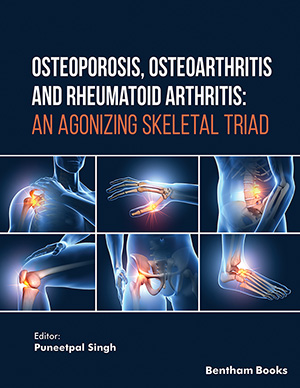Abstract
Background: No fully validated index is available for assessing overall disease activity in systemic sclerosis (SSc).
Objectives: To estimate the effect of disease activity as measured by different disease activity indices on the risk of subsequent organ damage.
Methods: The European Systemic sclerosis study group activity index (EScSG AI), the European Scleroderma Trials and Research Group Activity Index (r-EUSTAR AI), 12 point activity index proposed by Minier (12point AI) were calculated for 91 patients; the CRISS (The Composite Response Index for Systemic Sclerosis) for patients included after 2016. Data were analysed by parametric and non-parametric tests and logistic regression.
Results: EscSG AI, r-EUSTAR AI and 12point AI correlated with lung involvement. EScSG AI and r-EUSTAR AI correlated with diffuse skin involvement. EscSG AI correlated with digital ulcers and diffuse cutaneous involvement and r-EUSTAR AI with a renal crisis. Bivariate analysis showed an inverse correlation between the three disease activity scores and forced vital capacity (FVC) (p<0.001) and diffusing capacity for carbon monoxide (DLCO) (p<0.001) and positive correlation with pulmonary fibrosis (p<0.001), modified Rodnan skin score (mRSS) (p<0.001), health assessment questionnaire (HAQ) (p<0.001), systolic pulmonary pressure (sPAP) (p<0.001), C-reactive protein (CRP) (p<0.001) and capillaroscopy scoring (p<0.001) at both baseline visit and the 3-year follow-up visit. Logistic regression revealed that baseline EScSG AI adjusted for gender and age and that baseline 12-point AI both adjusted and unadjusted predicted worse skin involvement at 3-year follow-up; while adjusted EScSG AI predicted decreasing DLCO. Also, 12-point AI predicted a decline of FVC and higher HAQ scores at 3-year follow up; while baseline r-EUSTAR AI was able to predict muscular deterioration, decline of FVC and the increase of HAQ score during 3 years of following. An active disease according to EScSG AI at first visit predicted progression of joint involvement while an active disease at baseline showed by r- EUSTAR AI predicted muscular deterioration, FVC and DLCO worsening, as well as an increase in HAQ score during the follow-up period. r-EUSTAR AI was the only score to predict the decrease of FVC in a multiple regression prediction model (OR= 1.306 (1.025, 1.665), p=0.31) while baseline EScSG AI best predicted worsening of DLCO (OR=1.749 (1.104, 2.772), p=0.017).
Conclusion: Our study could not establish a gold standard to assess disease activity in SSc; especially EscSG AI and r-EUSTAR AI could quantify and predict major organ involvement in daily practice. CRISS can be useful as an outcome measure for patients with short disease duration included in clinical studies.
Keywords: Systemic Sclerosis, EScSG AI, r-EUSTAR AI, SSc, CRISS, 12point AI.
[PMID: 26243174]
[http://dx.doi.org/10.1016/S0889-857X(03)00023-1] [PMID: 12841294]
[PMID: 17477486]
[PMID: 12858472]
[http://dx.doi.org/10.1093/rheumatology/ken269] [PMID: 18784136]
[http://dx.doi.org/10.1177/2397198318765061]
[http://dx.doi.org/10.1136/ard.60.6.592] [PMID: 11350848]
[http://dx.doi.org/10.1093/rheumatology/keq022] [PMID: 20236952]
[http://dx.doi.org/10.1002/art.39501] [PMID: 26808827]
[http://dx.doi.org/10.1136/ard.2007.079756] [PMID: 18037628]
[http://dx.doi.org/10.1093/qjmed/hcm052] [PMID: 17601770]
[PMID: 10529133]
[http://dx.doi.org/10.1093/rheumatology/kex015] [PMID: 28340090]
[http://dx.doi.org/10.1136/annrheumdis-2019-215787] [PMID: 31422354]
[http://dx.doi.org/10.1080/14397595.2018.1551265] [PMID: 30472907]
[http://dx.doi.org/10.1016/j.rdc.2007.11.005] [PMID: 18329538]
[http://dx.doi.org/10.1002/art.24681] [PMID: 19644851]
[http://dx.doi.org/10.1002/art.24676] [PMID: 19644906]
[http://dx.doi.org/10.3899/jrheum.080281] [PMID: 19228662]
[http://dx.doi.org/10.1186/s13075-019-1842-x] [PMID: 30770765]
[http://dx.doi.org/10.1007/s10067-014-2525-2] [PMID: 24531870]













